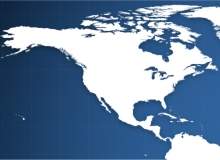
The diagnostic imaging sector in the US dwarfs that of Canada, being worth almost $6bn more in 2010 (see Figure 1). The US market, along with the European sector, is also the most advanced in the world, and is home to a number of major manufacturers in both diagnostic equipment and subsectors to the market, including contrast agents.
Like Europe, the North American market has suffered a varied and fluctuating economic climate in recent years, but also like its European counterpart, has fared relatively well in spite of the tough conditions, a lack of third-party finance and the tightening of available credit.

Discover B2B Marketing That Performs
Combine business intelligence and editorial excellence to reach engaged professionals across 36 leading media platforms.
Technological advances have helped to keep the sector moving forward with an endless flow of innovation supported by a growing pool of research and development projects, both academic and commercially led.
For North American manufacturers, and in particular those of the US, developing markets such as India and China are providing additional and more frequent opportunities. Manufacturers are increasingly looking to exploit these markets and their governments’ desire to improve their domestic healthcare provision.
However, the US market has faced some challenges in addition to the economic climate in recent years. In the early days of President Obama’s proposed healthcare reform, critics, including leading politicians, were extremely vocal about their concerns for the future of the medical imaging sector and in particular the impact of the reform on diagnostic imaging procedures. Since then much has changed, clarification has been sought, and found, and some have come on board. However, there are still many critics to these reforms.
The Patient Protection and Affordable Care Act (PPACA) is soon to be debated by the US Supreme Court, with some arguing that the final court ruling could spell the end, or perhaps the start, of the proposed reforms in full. Some in the profession have argued that the impact on diagnostic imaging could be detrimental, and the leading concern is the way reimbursements are provided. This could ultimately lead to reduced revenues for imaging centres and, in turn, reduced investment.

US Tariffs are shifting - will you react or anticipate?
Don’t let policy changes catch you off guard. Stay proactive with real-time data and expert analysis.
By GlobalDataPositive growth
Although the US market is now in positive territory, this hasn’t always been the case. Between 2003-2010 it contracted at an annual rate of 1.3%, compared with growth of 13.8% by its neighbour Canada (see Table 1).
C arms, the fastest-growing category in North America, showed a growth rate of 4.9% between 2003 and 2010 and is forecast to grow by 2.4% between 2010 and 2017 (see Table 2). The market, though, is dominated by MRI systems followed by ultrasound systems (see Figure 2). Market growth is driven by the former, which grew above the average diagnostic imaging market rate during 2003-2010 and is expected to continue following the same trend to 2017.
However, in 2010, ultrasound systems was actually the largest category in North America with $1.36bn in revenues, growing at a CAGR of 2.4% from 2003 to 2010. MRI systems was the second-largest category with revenues of $1.29bn in 2010. But MRI systems is expected to be the largest category in the North American diagnostic imaging market come 2017 with $2.09bn in revenues (see Figure 2), growing at an expected CAGR of 7.1% from 2010 to 2017.
In a reversal of fortune, ultrasound systems is expected to be the second-largest category with revenues of $1,904.1m in 2017.
Ultrasound systems will continue to be the largest category in terms of units sold in North America with a CAGR of 6.7% from 2010 to 2017. The volume sales in this category is expected to be 31,198 units in 2017.
GE Healthcare, Philips Healthcare and Siemens Healthcare are the leading companies in the diagnostic imaging market in North America with a combined share of 67.1%. In 2010, GE Healthcare led the diagnostic imaging market with a 26.8% share, followed by Philips Healthcare and Siemens Healthcare with 20.6% and 19.7% respectively

This article was first published in our sister publication Medical Imaging Technology.





